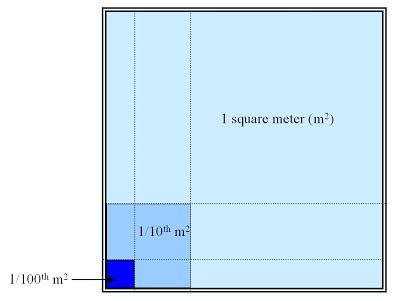CNHP ecologists use frequency of occurrence as a measure of plant community composition, especially if we want to know how the community is changing over time.

Frequency is usually expressed as a percentage, such as the percent of all plots in which a species is present, or the percent of cells in a grid that contain the species. It is a presence/absence measurement, and does not reflect the number of individuals or the area they cover. A little reflection tells us that frequency is highly dependent on the size of the area being observed – if our sample frame is the size of the earth, every species has a frequency of 100%!
Since we don’t always know in advance what size frame will be appropriate for detecting changes in species frequencies, and because some species are much bigger than others, it is common to use a “nested” frequency frame like this, placed at many different locations in the area being studied:

This frame can easily be made out of plastic pipe and elbow fittings. Divisions can be marked with strings, or marks along the frame edge. To read the frame, record a 1 if the species is in the smallest square, a 2 if it is in the 1/10th m square but not the 1/100th, and a 3 if it is only in the largest square outside the other two squares. A species that gets a 1 is present in all three frame sizes, but a species with a 3 is only present at the largest frame size. Calculate the percent of “present” frames for each species at each size frame. To detect change over time, a frame size that gives a percentage between 20 and 80 is best.

is the dog is a 1, 2, or a 3?




